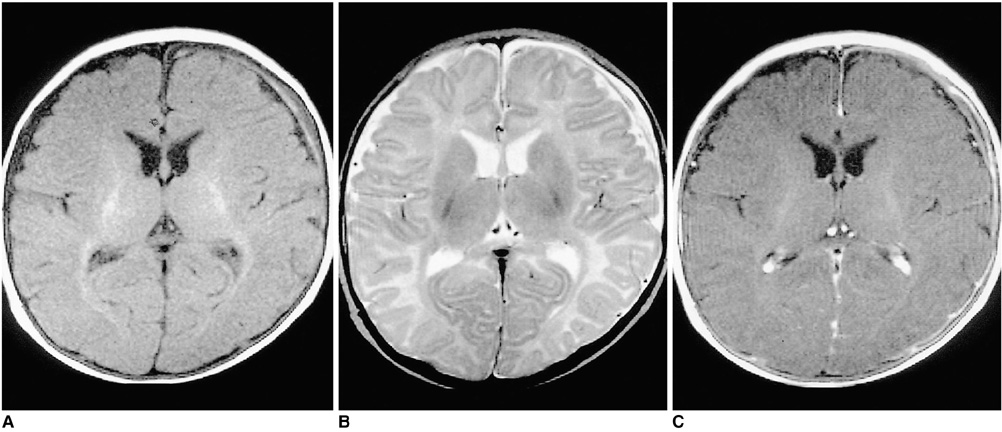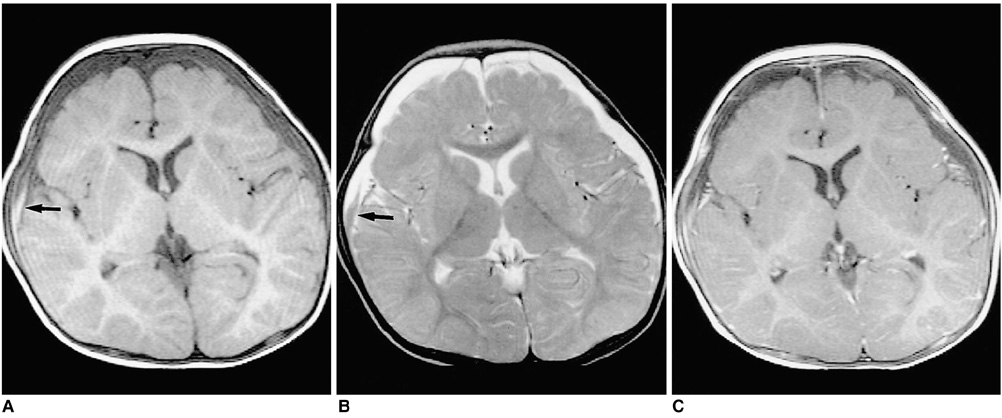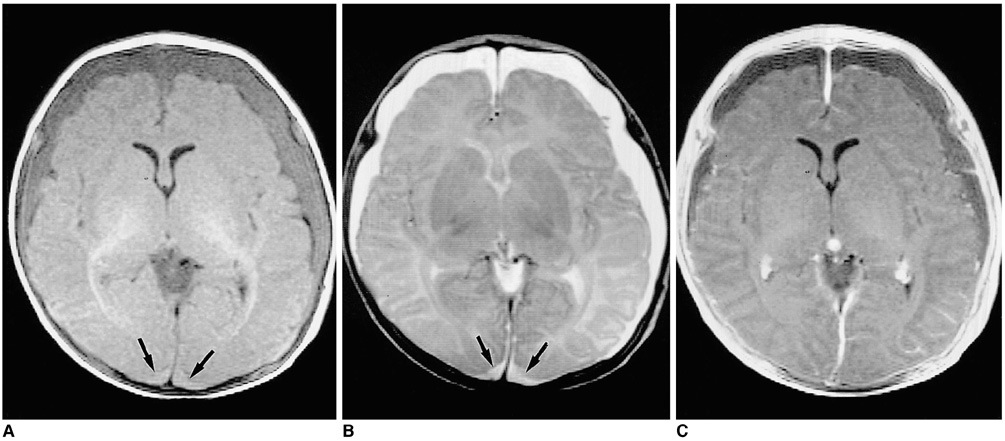Korean J Radiol.
2001 Sep;2(3):171-174. 10.3348/kjr.2001.2.3.171.
MR Imaging of Shaken Baby Syndrome Manifested as Chronic Subdural Hematoma
- Affiliations
-
- 1Department of Radiology, Hallym University Sacred Heart Hospital, Kyungki-do, Korea. leeyul@www.hallym.or.kr
- KMID: 754103
- DOI: http://doi.org/10.3348/kjr.2001.2.3.171
Abstract
- Shaken baby syndrome (SBS) is a form of child abuse that can cause significant head injuries, of which subdural hematoma (SDH) is the most common manifestation. We report the MRI findings of chronic SDH in three cases of SBS, involving two-, three- and eight-month-old babies. The SDH signal was mostly low on T1-weighted images and high on T2-weighted images, suggesting chronic SDH. In chronic SDH, a focal high signal on T1-weighted images was also noted, suggesting rebleeding. Contrast-enhanced MRI revealed diffuse dural enhancement.
MeSH Terms
Figure
Reference
-
1. Cox LA. The shaken baby syndrome: diagnosis using CT and MRI. Radiol Technol. 1996. 67:513–520.2. Petitti N, Williams DW III. CT and MR imaging of nonaccidental pediatric head trauma. Acad Radiol. 1998. 5:215–223.3. Sato Y, Yuh WTC, Smith WL, Alexander RC, Kao SCS, Ellerbroek CJ. Head injury in child abuse: evaluation with MR imaging. Radiology. 1989. 173:653–657.4. Duheime AC, Gennarelli TA, Tiubault LE, Bruce DA, Margulies SS, Wiser R. The shaken baby syndrome: A clinical, pathological and biochemical study. J Neurosurg. 1987. 66:409–415.5. Hearley MN, Sonntag VKH, Rekate HL, Murphy A. The infant whiplash-shake injury syndrome: a clinical and pathologic study. Neurosurgery. 1989. 24:536–540.6. Couser S. Shaken baby syndrome. J Pediatr Health Care. 1993. 7:238–239.7. Brown GR, Runyan DK. Diagnosing child maltreatment. N C Med J. 1994. 55:404–408.8. Kleinman PK. Diagnostic imaging in infant abuse. AJR. 1990. 155:703–712.9. Osborn AG. Diagnostic neuroradiology. 1994. St. Louis: Mosby;205–212.10. Budenz DL, Farber MG, Mirchandani HG, Park H, Rorke LB. Ocular and optic nerve hemorrhages in abused infants with intracranial injuries. Ophthalmology. 1994. 101:559–565.




